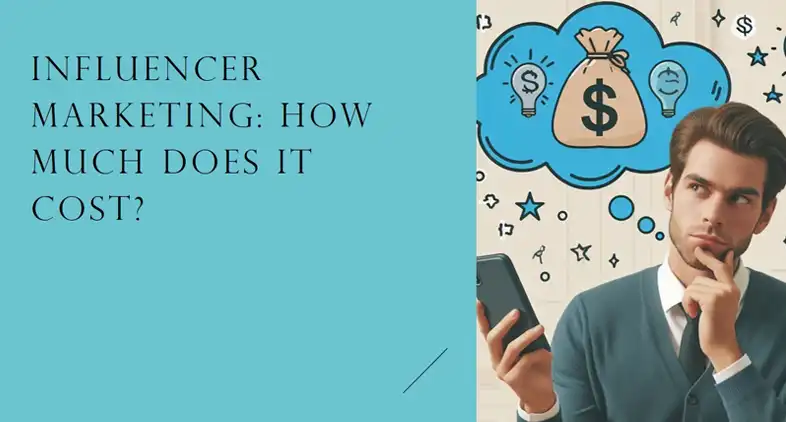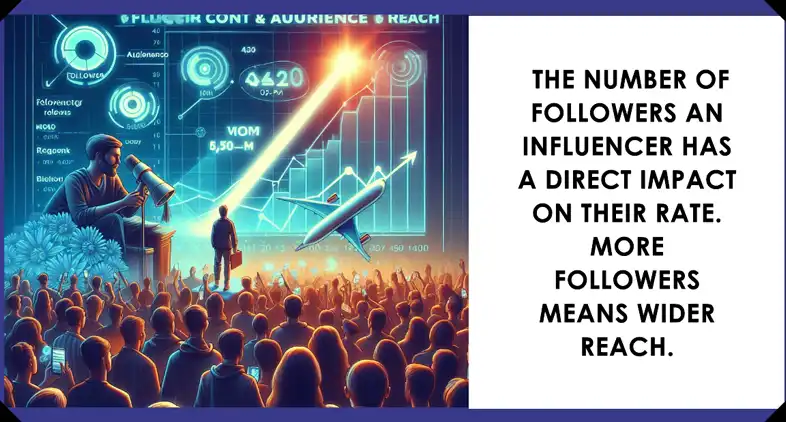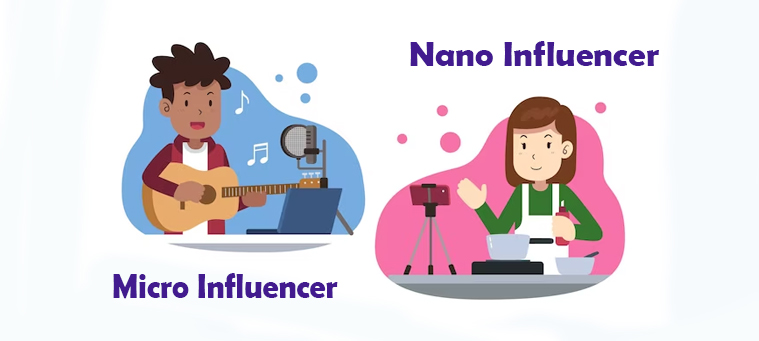The meteoric rise of influencer marketing has brands scrambling to leverage social media influencers to promote their products and services. But the myriad factors impacting influencer rates, from audience size to content types, make determining fair pricing confusing.
A whopping 89% of marketers say influencer marketing delivers better ROI than other digital marketing channels. With brands rapidly increasing their influencer marketing budgets year over year, competition is fierce for the most popular macro and mega influencers. But affordable micro and mid-tier options abound.
Whether you’re new to influencer marketing or looking to expand your current initiatives, this detailed article will provide actionable insights into the latest influencer pricing for 2024 and beyond. Let’s dig in!

What is an Influencer?
Before we dive into pricing, let’s start with a quick definition of what an influencer is. An influencer is someone who has built a reputation and audience around a specific niche or industry on social media platforms like Instagram, TikTok, YouTube, Facebook, and more.
Influencers often have very engaged followings of people who look to them for advice, recommendations, and insights related to their niche. This gives influencers the power to influence their audience’s purchasing decisions. Brands work with influencers to leverage their audiences and authority to promote products.
What Determines the Cost of Hiring Influencers?

There is no one-size-fits-all approach to influencer marketing pricing. Rates vary widely depending on many factors:
- Follower Count and Audience Reach – The number of followers an influencer has a direct impact on their rate. More followers means wider reach.
- Audience Engagement – Highly engaged audiences are more valuable. Engagement metrics like likes, comments, and video views are measured.
- Niche vs. Broad Appeal – Niche influencers in specific verticals can charge more. Broad influencers have lower costs but wider reach.
- Exclusivity and Usage Rights – Exclusive deals or content licensing increase rates. Non-compete clauses also cost more.
- Content Production Values – High-quality images, videos, and other content warrant higher influencer rates.
- Platform – Rates fluctuate across Instagram, TikTok, YouTube, Facebook, etc based on content formats and platform cultures.
- Campaign Length – Long-term contracts spanning months cost more than one-off posts. Post-frequency also impacts costs.
- Influencer Demand and Availability – Popular influencers in high demand charge premium rates due to limited availability.
- Agency Fees – Many influencers work with agencies that charge fees on top of base rates.
How Much Does It Cost to Hire Micro Influencers
Micro-influencers have followings under 10,000 followers. Average rates for sponsored social media posts fall in the $100 to $500 range. Micro-influencers thrive in specific niches and charge less because of their smaller reach. However, their high engagement makes them ideal for giveaways and contests. Gifted products often suffice for compensation.
How Much Does It Cost to Hire Mid-Tier Influencers
For mid-tier influencers with 10,000 to 100,000 followers, average costs per post range from $500 to $5,000. Mid-tier influencers attract larger, more targeted audiences than micro-influencers. A mix of paid compensation and gifted products is common. Mid-tier influencers offer strong ROI through tactics like affiliate marketing.
How Much Does It Cost to Hire Macro Influencers
Macro-influencers with followings of 100,000 to 1 million followers command $5,000 to $25,000 per post on average. Their content reaches mainstream, mass-market audiences but engagement is lower. Guaranteed pay is required upfront. Macro-influencers build broad brand awareness rapidly.
How Much Does It Cost to Hire Celebrity Influencers
At the top influencer tier, celebrities with over 1 million followers earn $25,000 or more per post. Celebrities have unrivaled reach but their audiences are often less targeted and engaged. Celebrities have high content production standards and require very large, guaranteed pay. This level is best for short awareness boosts.
Ready to find your next perfect influencer match? At PromotinoalPact, we specialize in finding the perfect influencer for your product and/or brand. Book a 1:1 call with us today.
Influencer Cost by Social Media Platforms
| Platform | Nano | Micro | Mid | Macro | Mega |
| $100 | $500 | $1,500 | $5,000 | $10,000+ | |
| YouTube | $200 | $1,000 | $5,000 | $10,000 | $25,000+ |
| TikTok | $100 | $500 | $1,000 | $3,000 | $5,000+ |
| $50 | $250 | $750 | $2,500 | $7,500+ |
Let’s break down average influencer rates across major social platforms:
Instagram:
- Nano: $100
- Micro: $500
- Mid: $1,500
- Macro: $5,000
- Mega: $10,000+
The visual nature of Instagram lends itself well to influencer content. But video commands premium prices around 1.5X the cost of image posts.
YouTube:
- Nano: $200
- Micro: $1,000
- Mid: $5,000
- Macro: $10,000
- Mega: $25,000+
YouTube has the highest production demands, leading to the highest influencer costs. Pre-produced videos warrant significant pay, ranging from $50-$100 per 1,000 video views.
TikTok:
- Nano: $100
- Micro: $500
- Mid: $1,000
- Macro: $3,000
- Mega: $5,000+
As the newest platform, TikTok has the most affordable influencer rates. But its viral potential means costs are rising quickly. Expect to pay more for transitions, effects, and high-quality video.
Facebook:
- Nano: $50
- Micro: $250
- Mid: $750
- Macro: $2,500
- Mega: $7,500+
Influencer costs on Facebook fall below Instagram and YouTube. But branded video outperforms static image content. Leverage Facebook for broad awareness campaigns.
Types of Influencer Partnerships
Now that we’ve covered rates, let’s discuss the various types of influencer partnership deals:
Sponsored Posts – The influencer creates and shares a branded post (photo, video, etc) on their social channels. This is the most common type of partnership.
Giveaways – The influencer offers a branded product/prize to their audience. Used to boost reach and engagement.
Ambassadorships – Long-term partnerships with influencers consistently promoting the brand across their channels. Requires strong brand-influencer alignment.
Product Seeding – Brand gifts products to influencers without requiring formal promotion. But hopes for organic mentions. More affordable way to build relationships and credibility.
Platform Takeovers – The influencer “takes over” the brand’s social account and creates content. Drives brand followers and awareness.
Affiliate Marketing – Influencer promotes products and earns a commission on resulting sales. Performance-based pay structure.
Contests – Influencer promotes a branded contest/sweepstakes. Stimulates user-generated content and social buzz.
Gifting – Providing influencer complimentary products with no formal expectations. Riskier strategy with unpredictable ROI.
The ideal influencer partnership type will depend on your specific marketing objectives and budget. Make sure to clearly communicate expectations and measurable results to maximize your ROI.
Finding an Affordable Influencer for Your Brand
The key to finding an influencer match that aligns with your budget is to start by defining your goals, metrics, and ideal pricing. Outline the key outcomes you want to achieve through influencer marketing campaigns. These may include sales, website traffic, social followers, etc.
Then determine what pricing thresholds make sense for your brand based on potential ROI. You can leverage influencer rate cards and average rates by tier as benchmarking guidelines.
Finally, use social listening tools to identify relevant influencers, and evaluate their historical campaign performance and audience engagement metrics. Focus on long-term partnerships for optimal ROI as opposed to one-off activations. Work closely with influencers to ensure affordable pricing for maximum mutual value.

